In the end we had no problems leaving Costa Rica, Ryan even managed to make the whole immigration team laugh when under ‘flight number’ on the immigration form he wrote ‘a pie’ (on foot) and the officer joked that that’s certainly one flight that never fails to take off. The friendly officer then decided to talk us through the Nicaraguan border crossing, telling us to ignore anyone who offered to help us in anyway. He then found a trustworthy money guy we could exchange money with and bid us adios with a ‘keep on walking’ farewell.
It was a smooth crossing but Nicaragua instantly felt different. There were crumbling buildings, very old buses and lots of hawkers around trying to sell us something or offering to help us. They try to insist that you have to buy the entrance immigration form from them, but as always at any border, you never have to pay to fill in a form and there are always forms for free if you go to a counter and ask for them. The only unfortunate part of the process was having to queue up behind two bus loads of tourists who had arrived just ahead of us, it was a very long queue standing with our backpacks on in the sun for over an hour.
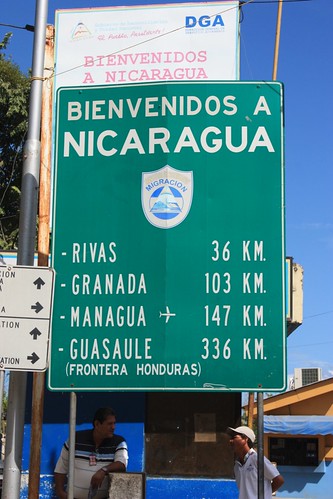
We had to catch a bus to Rivas and the first bus heading in that direction was a clamped out old yellow school bus that had seen much better days. The windows had to be tied up for them to stay shut and the seats had holes in the thread bare padding, pieces of metal sticking in you and were so ridiculously close together that if you are over 5 foot tall you have sore knees after the trip. From Rivas we had to catch a taxi to the port of San Jorge because it was a Sunday and no buses were running. Taxis in Nicaragua are also in the same sad state as the buses and if you want to check it’s a legitimate taxi you have to look for the very thin stencil of the word ‘taxi’ on the side otherwise it could just be any old car. The taxi driver of course tripled the price of the journey but he seemed trustworthy, promised us he wouldn’t pick up any other passengers on the way, so we couldn’t be bothered to barter him down from $3 to $1.
Isla de Ometepe
San Jorge sits on the edge of Lake Nicaragua and from there you can catch a ferry over to Isla de Ometepe. We crossed the lake to the island on the Che Guevara Ferry which is adorned with his image, reminding us of Nicaragua’s close links to Cuba.
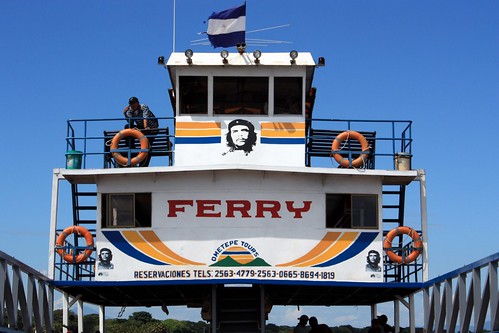
It was a smooth crossing and it gave us a fantastic view of the island, which was formed by two volcanoes, Conception, which is still active, and Maderas.
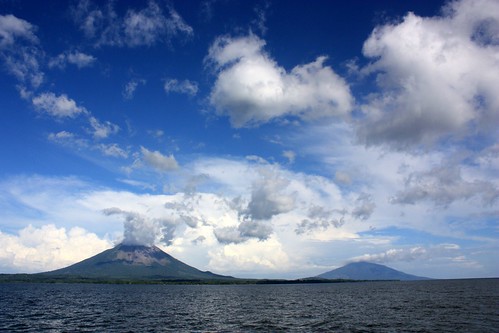
We headed over to Bague on the far side of the island to stay at the Finca Magdalena. The Finca is run by 14 local families who all live on the land, take care of the day to day running of the hostel in the main farm building and farm the land together, sharing in the profits.
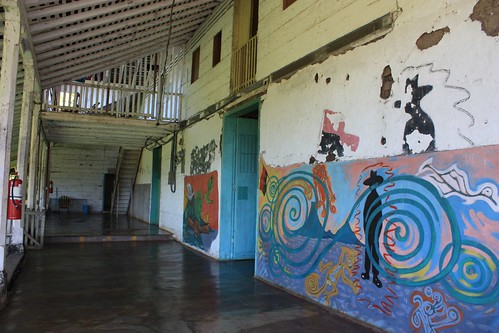
The finca has access to a path to the top of Volcan Maderas at 1390m. We hired a guide, one of the finca members, to show us the way. Elio was a funny old fellow who had lived in Bague all his life. We were a bit worried when we saw him turn up with a machete tied to his hip as we suspected the path was going to be rough going, but he assured us the way was fine and the machete was just to ward off any snakes that might get in our way! The first two hours of the walk were relaxing and we saw and heard the cacophony made by hundreds of Howler monkeys who sound so much fiercer than they look, before reaching the halfway point lookout for a great view of the tallest volcano, Volcan Conception at 1610m.
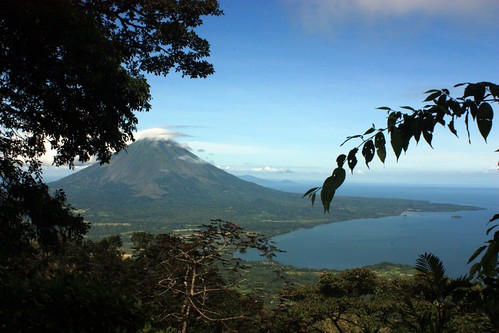
How I wish we had turned back at that point but we were foolish enough to keep heading up to the top and instantly the path took a turn for the worse. It was muddy, rocky and very slippery because it had rained heavily the night before. We had to scramble over huge boulders and pull ourselves up using whatever we could grab hold of. Elio decided we wouldn’t need a break so just kept chugging up the route until we reached the top. I say the top but you would never know it because the top was surrounded by trees and clouds so you just felt like you were anywhere in the forest, it was not a rewarding end to the climb. To top it off, we couldn’t see down to the laguna in the crater as it was so cloudy and the conditions were too dangerous for us to climb down to it. After a ten minute break we started to head down again, which was even worse as it felt like every step we took was precarious and could land you on your bum, which it did several times. We were so relieved to back it back to the Finca in one piece, even if we were covered head to toe in mud and Elio had grown a moss beard because it took us 8 hours to get up and down.
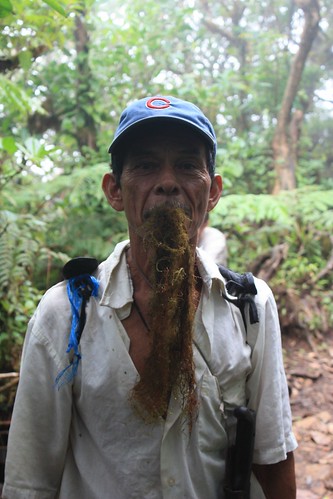
After a relaxing couple of days at the Finca, we returned to the main town of Moyogalpa so Ryan could organise a climb of Volcan Concepcion. After asking around and receiving quotes for $25 per person, we met another Ryan in the street who told us he was climbing with a group the next day and they had bartered for a guide at a very cheap price. I’m sorry but I’m now about to moan about one of my pet gripes of travelling, people who barter far too hard. This group had bargained with the guide to get his price down from the already low price of $15 per person to $8.50 each. After Ryan was introduced to the group, one of them decided this gave them even more bargaining power and set about getting a further $1 discount and was very pleased they only had to pay $7.50! What annoys me is that there really is no difference in a dollar or two for someone who can afford to take time off work to travel, can afford a flight to Central America to have an adventure in a far flung country where the guide will never have the money or opportunity to do so for himself because Nicaragua is a very poor country. We have travelled around a lot now and we know a fair price when we see one but some people have to take it to extremes and undermine the poor people who will take what they can get for a days work. I bet none of the group would agree to be paid half of their wages for a day. The guide admitted to Ryan that he had never taken a group to the top of the volcano for so little money before but he just wanted to work and didn’t want to lose the money the group would pay. He then had to pay a commission to the hostel where the group were introduced to him so he got even less money in the end. On top of that the group didn’t even tip the guide for his service, which was expected of them, so Ryan decided to pay him the original $15, which the guide was very grateful for, but still probably wasn’t enough to cover the work he did.
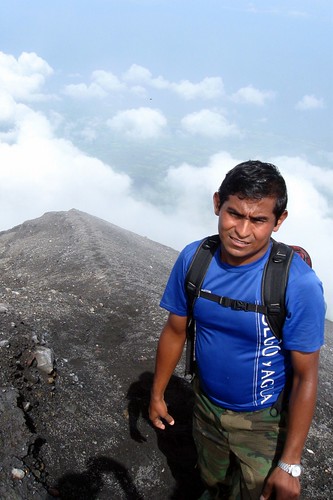
Anyway, Ryan really enjoyed the climb even if it did test his fitness to the max. After half the group dropped out en route as the going was hard and quick, the remaining three managed to do the round trip in 7.5 hours, the usual time is quoted at 8-10 hours! They had a bit of a shock whilst posing for pictures at the top when the volcano burped at them! The guide’s face suddenly turned to horror and shouted ‘Vamos, Vamos!’ They had to quickly scramble down the scree to get away from the top or they risked being asphyxiated by the fumes the volcano emits, leaving them all cut up by the lava rocks as the fell over to get away from the sulphur.
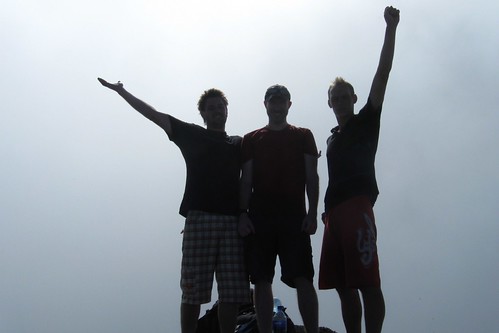
Granada
We left Ometepe very early the next morning and made our way over to the colonial town of Granada. By now you will know that we have visited thousands of these old colonial towns in our time but instead of getting bored by them they are starting to feel like returning to a home away from home. They are all, to quote that great Asian adage, same same but different, but it is always a pleasure to stroll around the colourful streets admiring the different architecture inside and out, watching the locals sway away in their rocking chairs and climbing crumbling bell towers to get a view over the roof tops.

Granada, sitting on the edge of Lago Nicaragua with volcanoes looming nearby, was a really lovely city to relax in for a few days before we headed over to the airport.


Little Corn
We often wondered what it would be like to live on corn for a week, so to discover for ourselves we flew over to Big Corn island just off the coast of Nicaragua. From there we caught the daily lancha ride for 30 minutes across to Little Corn, and what a journey that was. This is the ride across the sea where the locals study the weather forecast in detail for 3-4-days to decide when the best time to cross will be because usually it is rough. When I opened my eyes and saw the waves that we were riding between I thought we were goners and considered jumping off. It didn’t help when you could hear the driver cut the engine down just before the boat was about to hit a big wave and heard all the locals going ‘sheeeeeeeeeeeeeeetttttt’...and then BANG and OUCH as the boat slammed down on the sea, you lifted off the seat and fell down very hard. I had to just close my eyes, pretend I was on a dune buggy or rollercoaster ride and somehow we arrived on the island in one piece but wondering how on earth we could ever leave again if that was the only way to return to the airport. However, when we wandered over to the east side of the island to find a beach hut for the week and when we saw the turquoise water, the white sand and found the perfect little hut just ten steps from the sea, we knew it was worth the journey.

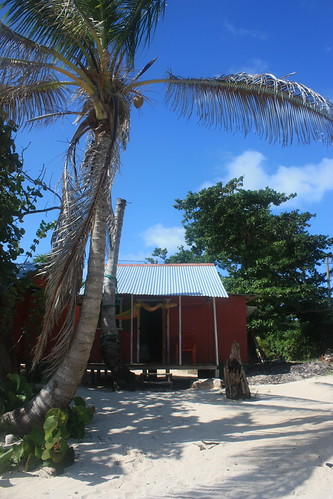
So how do you live on Corn for a week, this tiny island that you can walk all around in under an hour? Well if you’re a diver like Ryan, you go diving everyday, discovering new depths and helping to spear the invasive lionfish. If you’re a non-diver like me, you explore the hammock, turn a few pages of a book before getting distracted by the waves and the sun, waving to locals strolling past who always say hello, and watch the fishermen bring in dinner for the evening. The biggest decision of the day would be contemplating what to have for lunch when a local boy or girl would come up to the hut selling empanadas, chicken pies, ginger soda cake or coconut bread making the decision much easier.
Little Corn felt like the real Caribbean and we completely forgot we were in Nicaragua. The locals all spoke English with a heavy Caribbean accent, which took some getting used to as they also mix up a lot of English and Spanish words. The way of life is very laid back, things happen when they happen. A restaurant or shop is open one day then not the next. They have menus on offer but they will make you anything you want if they have the ingredients. The island doesn’t have any all inclusive resorts, just basic wood cabins made well enough to keep out the rain but not well enough to keep out the ocean breeze and the sound of the waves, thank goodness. I think the sign at Carlito’s Place where we stayed summed up the life here pretty well and the sunsets weren’t half bad either.
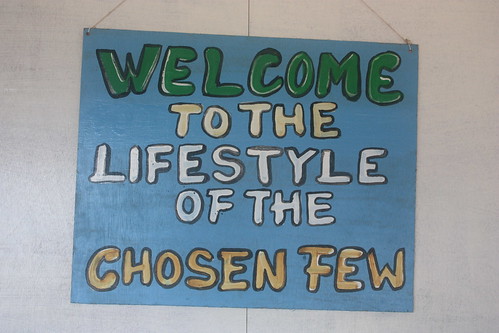
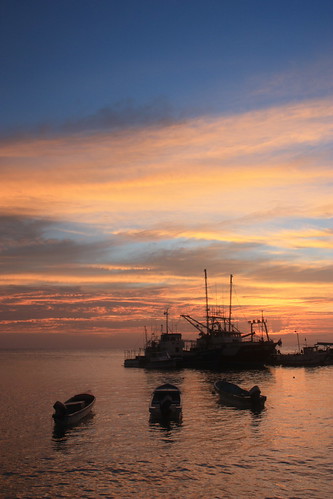
Thinking we could easily stay another week or two on Little Corn, reports of an approaching hurricane were fast spreading around the island so we decided to head back to the dock to catch the lancha again and head back to the airport. Fortunately it was a much smoother ride this time, we should have known by the amount of locals crammed into the boat that it was a good day to cross.
Leon
Our next stop was Leon, once the former capital of Nicaragua and meaning ‘lion’ in Spanish and fittingly there are a few of the beasts roaming around the city, most of them surrounding the largest cathedral in all of Central America.
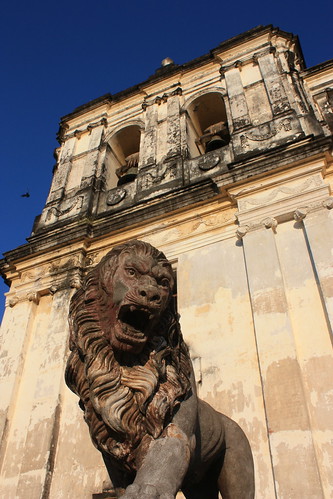
Leon was once the heart of the Sandinistas revolutionary movement and today is still very much in support of the FSLN party and is considered to be the most liberal city in the country. It’s hard to ignore Nicaragua’s history of the civil war here, which raged from the late 1970’s and throughout the 1980’s after the Somoza dictatorship reigned for over 40 years. The city’s walls are strewn with murals depicting the revolution and the faces of the heroes and martyrs lost along the way.
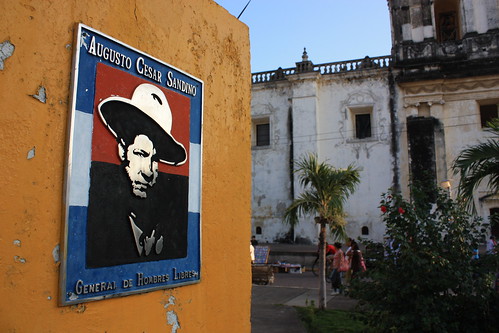

The Galeria Heroes y Matires is a gallery and remembrance room for all the sons and daughters from Leon who died fighting against the dictatorship and US led Contras and is affectionately run by the Mothers who lost their children during the war.
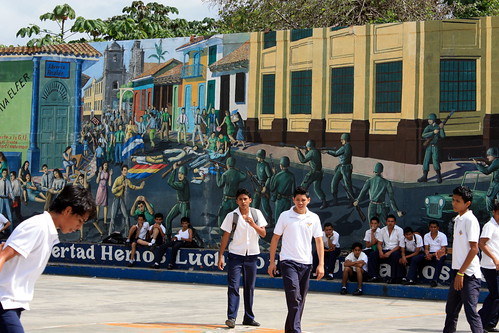
We spent a lot of time in Leon discussing where we wanted to head to next and what we wanted to see in the rest of Central America. We leave tomorrow to head to the border with Honduras but whether we stay in that country or make our way into El Salvador is still not certain for us. We’re just going to let backpacker fate decide!
Nica Summary
Nicaragua has the coldest beer ever, with each bottle pulled out of the chiller almost frozen it’s so cold!
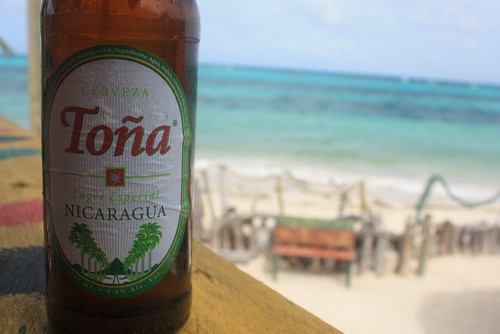
We can’t remember what it’s like to have a hot shower as every one we take is so cold. You have to remember to have a shower as soon as you return to the hostel when you’re hot from walking around otherwise it’s a challenge to get under the stream.
Nicas are tough looking people at first, many men have gang style tattoos on their hands and sit around drinking rum and playing pool all day. There’s even a ‘Macho’ breakfast option available for them; a black coffee, a cigarette and a shot of rum!
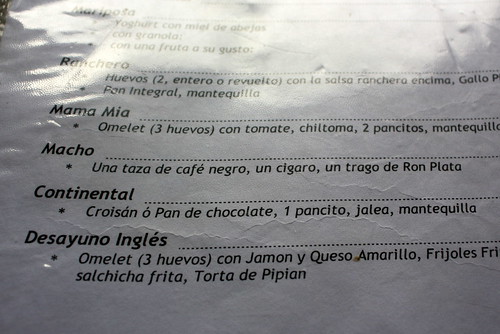
Generally everyone we’ve met has been friendly towards us, even the overly persistent taxi drivers calm down and relax once you ask them their name. I think we could have stayed longer in Nicaragua if we had arrived here earlier in our trip, it would be a great place to learn Spanish and explore the far reaches of the Caribbean coast. It's a pretty country with rolling green hills and farmlands divided by volcanoes and grand lakes that sparkle under the sun (YES the rainy season is over!!!) But just seeing the highlights of the country has left us satisfied, maybe we’ll be back one day!
Highlights
Favourite Place - Little Corn (Both)
Favourite Attraction - Hammock time (Jo) Climbing Volcan Concepcion (Ryan)
Favourite Food - Coconut bread (Jo) Chicken in jalapeno sauce (Ryan)
Favourite Beer - Toña (Ryan)
Favourite Drink - Macua - national cocktail of rum, guava and orange juice (Jo)
Lowlights
Cccccold showers
For those of you thinking of possibly travelling to the region: Costs in USD
Accommodation - $15 for a private room in hostel, $20 for a beach hut facing the sea
Restaurant meal - $2-4
1L Bottled Beer - $2
500ml Soft Drink - $0.75
1.5l Bottle of water - $0.75
Bus - $0.75-1 / hour
Jo y Ryan
Photos: http://www.flickr.com/photos/dojo77/